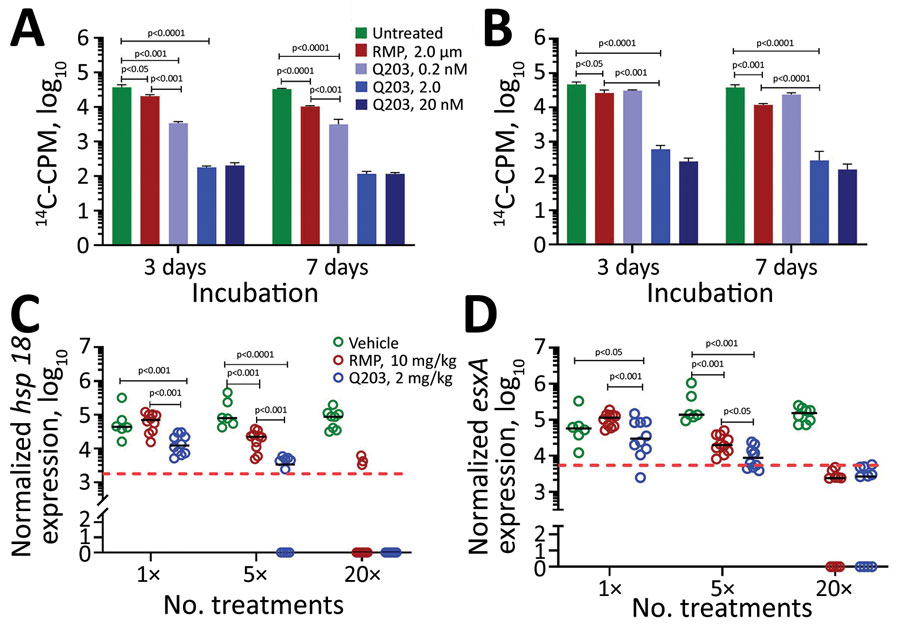Volume 28, Number 3—March 2022
Research Letter
Sensitivity of Mycobacterium leprae to Telacebec
Figure

Figure. Efficacy of telacebec against Mycobacterium leprae bacteria in axenic culture (A), in murine bone marrow–derived macrophages (B), and in athymic nude mouse foot pad model (C, D). M. leprae hsp18 (C) and esxA (D) expression levels were used as a surrogate measure of viability. For panels A and B, the assays were performed in triplicate for each condition. For panels C and D, each foot pad is taken as a data point, and the red dotted lines indicate ≈99% M. leprae kill. Significance was determined by 2-tailed unpaired Student t-test. 14C, carbon 14; CPM, counts per minute; Q203, telacebec; RMP, rifampin.
Page created: February 02, 2022
Page updated: February 21, 2022
Page reviewed: February 21, 2022
The conclusions, findings, and opinions expressed by authors contributing to this journal do not necessarily reflect the official position of the U.S. Department of Health and Human Services, the Public Health Service, the Centers for Disease Control and Prevention, or the authors' affiliated institutions. Use of trade names is for identification only and does not imply endorsement by any of the groups named above.